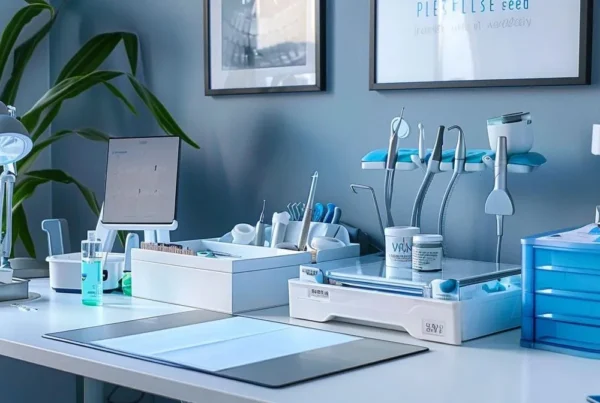Choosing the Right composite or porcelain Veneers for Your Smile and Lifestyle.
When it comes to enhancing your smile with veneers, deciding between composite and porcelain is more than a matter of preference, it’s a decision that affects your smile’s longevity, appearance, and overall value. Both types offer distinct advantages, and at Grand Prairie Family Dental, we’re here to help you choose the one that fits your goals and lifestyle best.
Whether you’re seeking a quick improvement or planning for a long-term investment in your smile, we walk every patient through the pros and cons of each material. This guide covers everything you need to know about composite and porcelain veneers so you can feel confident in your decision.
Comparing Materials: Composite vs. Porcelain Veneers
The biggest difference lies in how the veneers are made and applied. Composite veneers are sculpted directly onto the teeth using tooth-colored resin and can often be completed in just one visit. They’re a great choice for minor cosmetic fixes and fast results.
Porcelain veneers are made in a dental lab from high-strength ceramic materials. They take two or more visits to complete and are known for their superior aesthetics, including lifelike translucency that closely resembles natural enamel. Porcelain typically offers a more polished, stain-resistant finish.
At Grand Prairie Family Dental, we’ll help you determine which option fits your goals: immediate enhancements or long-term, natural-looking brilliance.
Cost and Longevity: A Smart Investment Either Way
Many patients want to understand the trade-off between upfront costs and long-term value. Composite veneers are more affordable in the beginning and are easier to adjust or repair. However, they usually last about 5 to 7 years and may require more upkeep.
Porcelain veneers have a higher initial cost but can last 10 to 20 years with proper care. They’re resistant to staining, stronger against chips, and typically require fewer replacements over time. At Grand Prairie Family Dental, we work with you to evaluate both the cost and the lifetime value of your veneer choice.
Enamel Preservation and Reversibility
For patients concerned about tooth preservation, composite veneers are appealing because they require little to no removal of natural enamel. This makes the procedure less invasive and reversible in many cases.
Porcelain veneers, however, involve removing a small layer of enamel to make room for the shell. This step is irreversible, but it provides a more secure and lasting bond. If you’re ready for a long-term transformation, porcelain offers both strength and beauty. If you prefer flexibility, composite may be the better option.
Maintenance Needs and Daily Wear
Composite veneers are easier to apply and repair but may show wear and staining faster than porcelain. You’ll need to avoid staining foods and habits and may need occasional refinishing.
Porcelain veneers require less maintenance over time. They resist discoloration and are more durable against daily wear. No matter which you choose, good hygiene and routine checkups at Grand Prairie Family Dental are key to protecting your investment.

Choosing Based on Your Habits and Goals
At Grand Prairie Family Dental, we customize every recommendation to fit your individual needs. We take into account your oral health, lifestyle, dietary habits, and long-term goals.
If you’re often in front of people or consume dark beverages regularly, porcelain may offer better stain protection and realism. If you’re on a tighter budget or want a reversible option, composite might be ideal. We help you weigh all factors to find the best match for your daily routine and smile aspirations.
Planning for the Future: Scalability and Flexibility
Sometimes your veneer needs to change over time. We support both immediate goals and evolving needs. A patient might start with composite veneers for a quick improvement, then later upgrade to porcelain for longevity and enhanced aesthetics.
That’s why we begin with a full exam of your enamel, bite, and gum health to ensure your mouth can support veneers now and in the future. Our flexible treatment planning means you’re never locked into a single path—we adapt with you.
Ongoing Support and Veneer Education
Our goal isn’t just to place veneers—it’s to ensure long-term success. At Grand Prairie Family Dental, we guide every patient on how to properly care for their veneers and maintain results over time.
We educate you on:
- Safe brushing and flossing techniques to avoid damage to veneer edges
- Avoiding foods and habits that can stain or wear your veneers
- What to watch for and when to call us about changes or concerns
Our team stays connected beyond your appointments so your veneers stay healthy and beautiful for years.
Daily Habits That Maximize Veneer Longevity
What you do every day makes a big difference. We help patients build smart routines that protect both composite and porcelain veneers. Here are our top tips:
- Brush gently with a soft toothbrush and non-abrasive toothpaste
- Use a night guard if you clench or grind your teeth
- Avoid chewing on hard objects like ice or pens
- Schedule biannual checkups to clean, polish, and monitor your veneers
With proper care and consistent visits, both composite and porcelain veneers can offer long-lasting beauty and function.
Finding the Right Veneers for You
Choosing between composite and porcelain veneers isn’t a one-size-fits-all answer. Each material has benefits based on your unique needs, goals, and budget. Composite is a great option for short-term corrections and flexibility, while porcelain provides durable, lifelike results for patients looking for long-term value.
At Grand Prairie Family Dental, we’re here to help you explore all options and feel confident in your decision. From consultation to aftercare, our expert team ensures your veneers match your lifestyle, look amazing, and last for years to come.
FAQs About Composite vs. Porcelain Veneers
Composite or porcelain veneers—which is better for me?
It depends on your priorities. Composite costs less and can be done in one visit, while porcelain lasts longer and offers more stain resistance. We’ll evaluate your goals and recommend what’s best for your needs.
How long do porcelain and composite veneers last?
Porcelain veneers typically last 10–20 years, while composite veneers last about 5–7 years. Both can look great with proper care, but porcelain is the better option for long-term performance.
Are there alternatives to veneers for improving my smile?
Yes. Depending on your needs, we might suggest bonding, whitening, crowns, or orthodontics. We’ll walk you through all your options so you can choose what works best for your smile.
Book an appointment with Grand Prairie, TX’s top dentist, Dr. Khademazad, today. It’s the first step to a better smile and increased self-esteem. Call us at 972-988-0900.
Schedule Your Consultation Today!
Grand Prairie Family Dental
972-988-0900
2475 W Pioneer Pkwy
Grand Prairie, Texas, 75051






